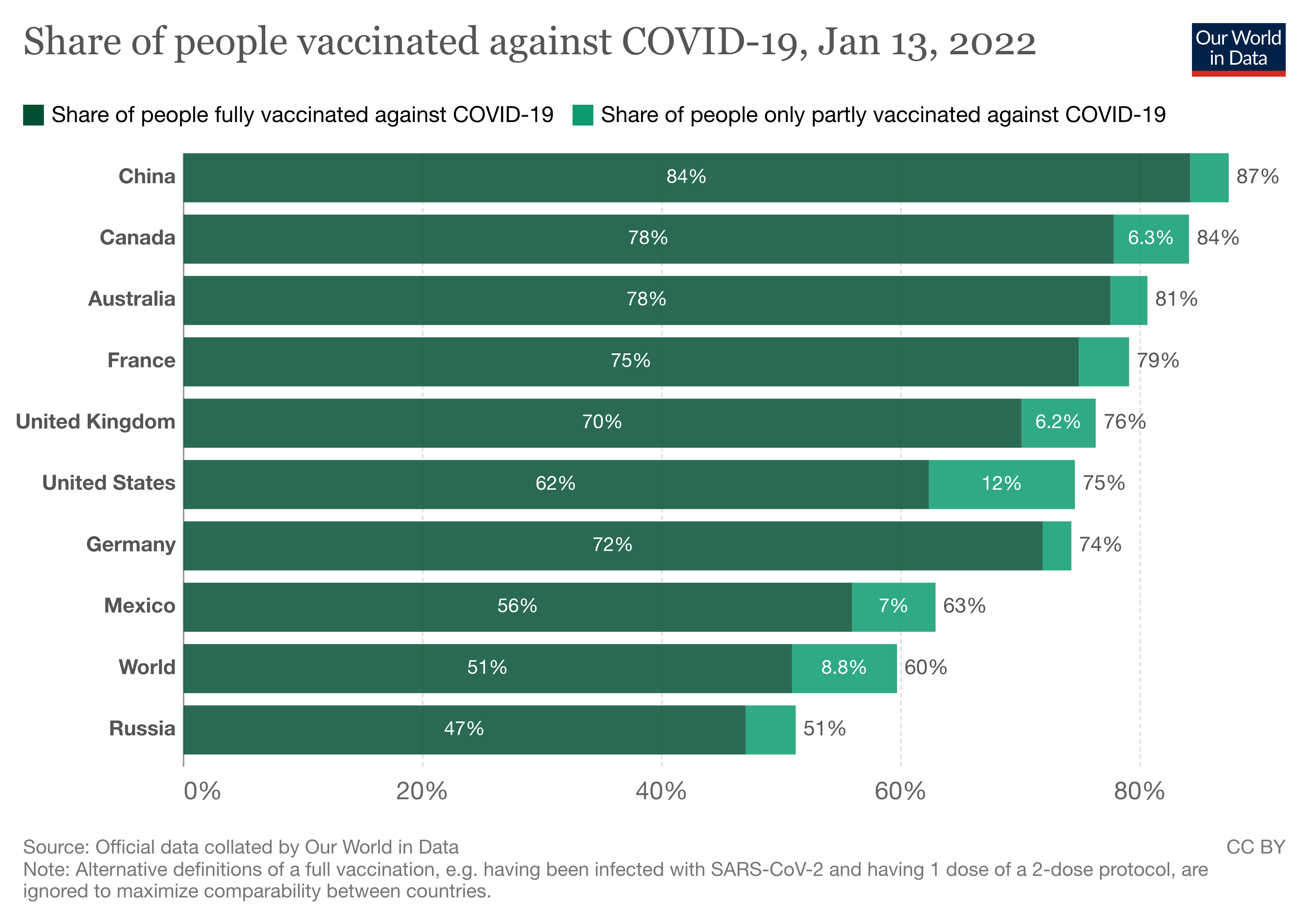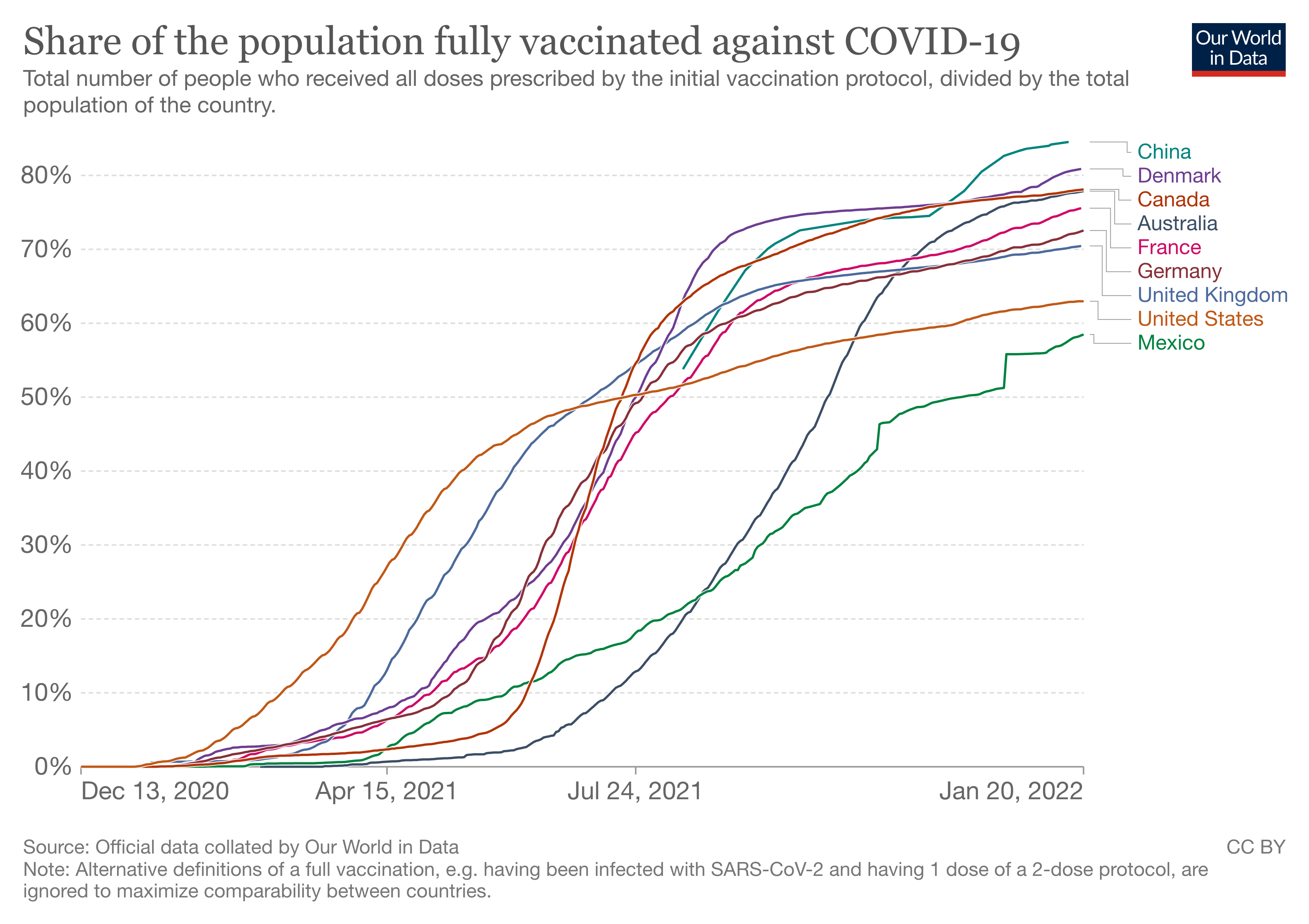COVID-19 Background
If you are like me, you may find it hard to believe that 2019 was three years ago. This means that we have been fighting the COVID-19 pandemic for just a little over two years (having first been reported in the U.S. in December of 2019)—which for me, seems impossible. With that being said, much has changed within this timeframe. In January 2020, the first North American COVID cause was reported and then by July an average of 1.9M cases per day per U.S. state. Not only this, but we have seen great changes in the level of precautions and procedures that state health officials have been taking: from the many K-12 schools canceling the remainder of the 2020 school year in March to California having a “stay-at-home order” until June 2021—there have been great, rapid changes in procedures.
This brings us to the current time period where many are pushing for booster shots, some workplaces are still maintaining work-from-home conditions, varying counties and cities are reintroducing mask mandates, and the U.S. vaccination rate has slowly climbed to 62% and the worldwide vaccination rate sits at 51%. The chart below notes the varying vaccination rates of the leading developed nations of the world as well as the global vaccination rates.

It can seem hard to think that things are getting better when also considering the two COVID-19 variants that have arisen during this time as well; however, much progress has been made but the question is how much progress will continue to be made?
2022 Predictions and Expectations
Attempting to make predictions for how the rest of this year will pan out is quite difficult- if these recent years have taught us anything, it is that we can’t always rely on predictive models to show us how events will occur. Looking at the perhaps forgotten Delta variant, at around the beginning of November, the U.S. reached 99.59% of COVID cases being the Delta variant; now, we see that 2.3% of cases are Delta, whereas 97.41% are the Omicron variant. So yes, things change quickly and unpredictably. Of course, however, we will continue to make predictions and projections because this helps us know where we are, where we want to be, and how to get to where we want to be.
Seen on the graph below, the number of people who are getting fully vaccinated in some of the world’s wealthier countries are certainly rising.

With these countries averaging about a 71% vaccination rate, it can seem easy to be optimistic about their continuance throughout the remainder of this year. In fact, a predictive model by the institute for health metrics and evaluations that with 80% of the global population using masks, we would be able to drop the number of total deaths per day to around 381 by the beginning of may 2022—a major feat! This, in turn, would likely result in the degradation of covid-19 from pandemic-status to something of endemic-level severity. An endemic, for those not familiar, is the baseline (or lowest) level of prevalence of an epidemic within a community that the cdc recognizes. Recently, a poll of scientists from 2021 showed that 89% thought it was ‘very likely’ or ‘likely’ that sars-cov-2 (the virus which causes covid-19) would become an endemic very soon. This exciting and interesting revelation has prompted many to consider that—with the rise of vaccination rates—that this endemic-level COVID-19 may be reached within 2022.
Post-Pandemic Predictions and Expectations
Global Public Health
At this point in history, imagining a post-pandemic world where we have reached the collective “new normal” that people have been speaking of since the first COVID case can seem extremely farfetched, but many hold out hope that this will cause governments and world organizations to prepare us better for the next potential disease outbreak. Senior Fellow and Deputy Director for the Global Economy and Development program at Brookings Institution, Dr. Homi Kharas, is one of these individuals; Kharas states, “There’s also a deeper institutional reason for optimism on global public health. The deficiencies of the current system have been identified, and there is global political leadership to understand better what needs to be done to protect us from the next pandemic.” This positive outlook does seem to be rather realistic given the generation of A Global Deal for Our Pandemic Age, a report written by the G20 High-Level Independent Panel on Financing the Global Commons for Pandemic Preparedness and Response. Similarly, it can also be expected the the world as a whole may place a larger emphasis on health and helping to create better preventative measures for ensuring the health of their citizens—think advances in accessibility to healthcare, qualified physicians, and more general funding for medical research. Even with the creation of the COVID-19 vaccine using mRNA and sophisticated medical technology, we should also expect stronger and faster vaccinations in the future should another pandemic-level outbreak occur.
In terms of social behavior, some medical experts are thinking that we may not be seeing the end of the facial covering with the end of the pandemic. The rationale behind this is that we have now discovered that 1) masks and facial coverings are extremely effective at blocking and preventing viral disease spread, and 2) a large portion of the population is able and willing to wear masks or facial coverings when they are feeling ill; these in combination could mean that when someone gets a cold or the flu [or a more seasonal version of COVID] then they may simply just “mask-up” and maintain a distance in public and they may be good to go. This idea would mean that the traditional sick day could be completely different in the future.
Sustainability
Revisiting Dr. Kharas, he also postulates that through this pandemic cycle we have seen “the huge expansion of awareness of the sustainable development goals (SDGs) and the growing commitment from society to advance the goals is a major below-the-radar story.” Frankly, this is really exciting! Even looking within the past several years, we have seen a major global shift among the way we look at the climate change issue. Primarily, we have seen many prominent corporations and organizations making stronger efforts to appeal to this goal of lessening the effects of climate change—which, while huge, is not going to be enough. However, these top companies promoting environmental efforts has spread to many more. For example, in 2017 Apple made a commitment to make their products and their facilities carbon-neutral by 2030. Through 2017 to present-day, they have managed to make their offices carbon-neutral and their products are advancing by the removal of dozens of materials and components that are hazardous for the environment. It is Dr. Kharas’ inference that climate conscious measures—like those previously mentioned—will continue at an increased rate as a result of more focused awareness that has been placed on this issue over the past several years.
Conclusion
It had been said many times, but these are truly unprecedented times, and the future is incredibly difficult to predict. Optimistically, this could very well be the last several months of the COVID-19 pandemic; at which point, our focus can shift to rebuilding that which has succumb to the pressure that this pandemic has put on so many different areas: our mental and physical health, manufacturing and shipping industries, the travel industries, the global economy, and most importantly the people. Many people have had any number of tremendous struggles during the past two years
